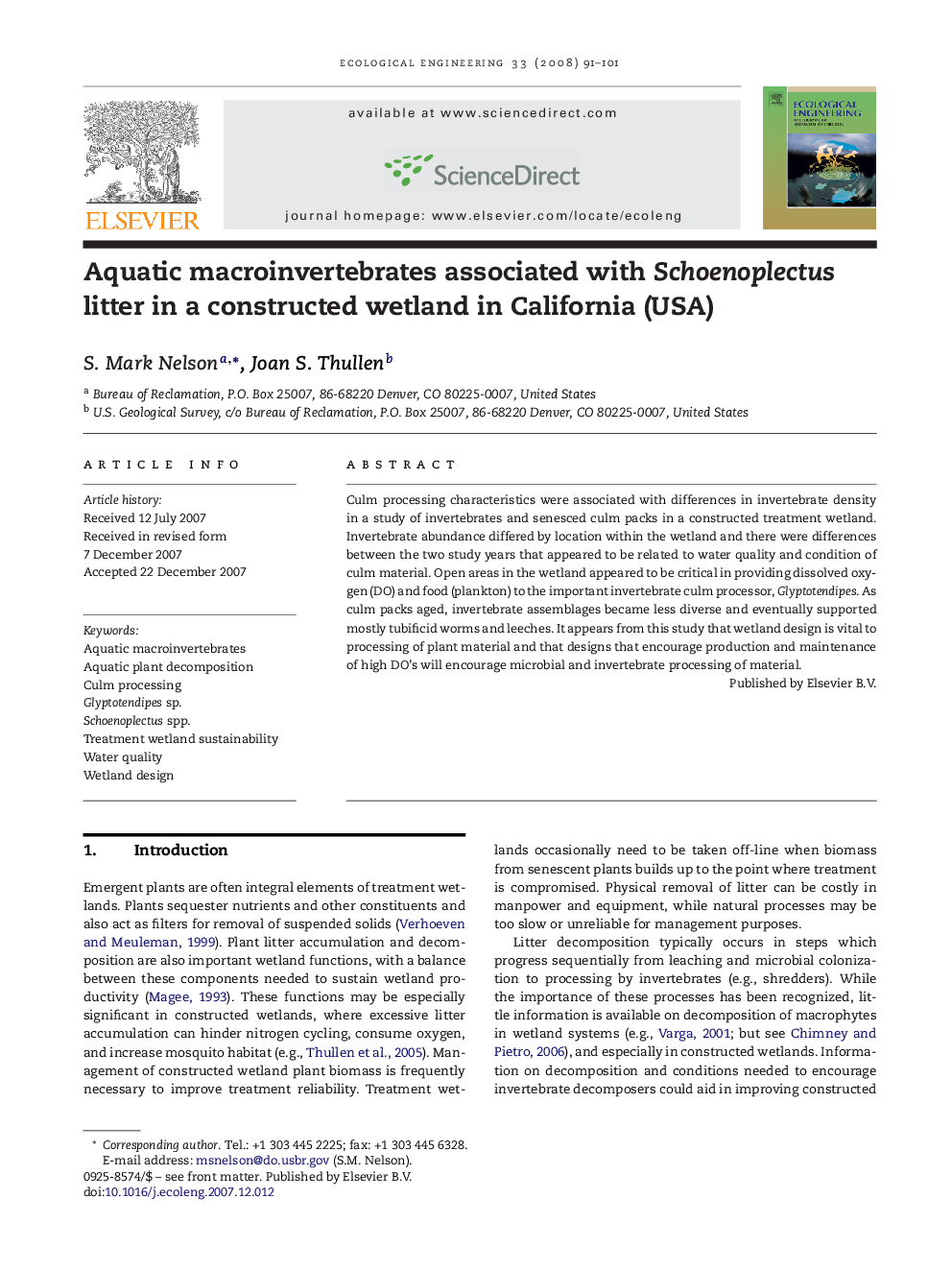| Article ID | Journal | Published Year | Pages | File Type |
|---|---|---|---|---|
| 4390775 | Ecological Engineering | 2008 | 11 Pages |
Culm processing characteristics were associated with differences in invertebrate density in a study of invertebrates and senesced culm packs in a constructed treatment wetland. Invertebrate abundance differed by location within the wetland and there were differences between the two study years that appeared to be related to water quality and condition of culm material. Open areas in the wetland appeared to be critical in providing dissolved oxygen (DO) and food (plankton) to the important invertebrate culm processor, Glyptotendipes. As culm packs aged, invertebrate assemblages became less diverse and eventually supported mostly tubificid worms and leeches. It appears from this study that wetland design is vital to processing of plant material and that designs that encourage production and maintenance of high DO's will encourage microbial and invertebrate processing of material.
